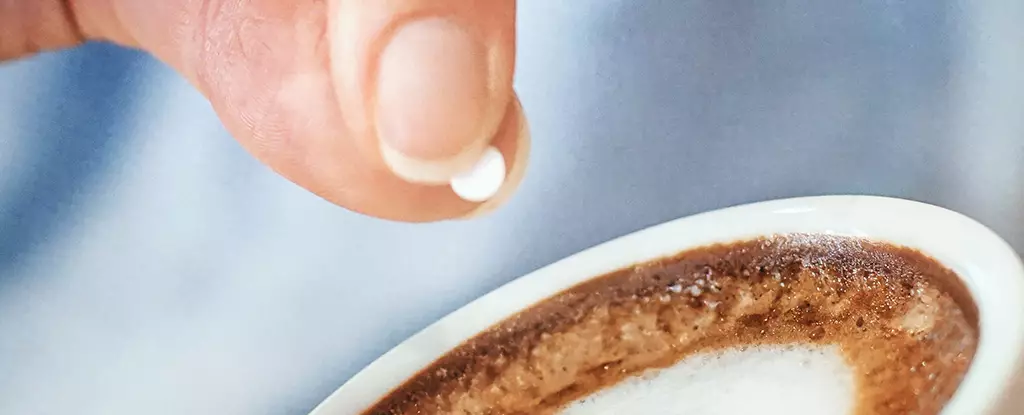Artificial sweeteners have often been at the center of heated discussions regarding their health implications. While they provide a low-calorie alternative to sugar, their long-term effects on metabolic health and gut bacteria remain shrouded in uncertainty. The recent study led by researchers at Brunel University unearths an unexpected potential for one of these sweeteners—saccharin. Not only does it engage in the symbiotic dance with gut flora, but it also appears to wield capabilities that could redefine our approach to combating one of modern medicine’s most pressing challenges: antibiotic resistance.
Exploring Saccharin’s Surprising Antimicrobial Properties
The findings from Brunel University should capture our attention. The initial inquiry into saccharin’s interaction with various bacterial strains revealed a startling conclusion: this seemingly benign sweetener acts as a disruptor against several harmful bacteria, including drug-resistant strains like Staphylococcus aureus and Escherichia coli. The researchers observed that saccharin effectively compromised the structural integrity of these bacteria, effectively leading them to rupture and die—an action that sounds more akin to an antibiotic than a common kitchen staple.
Microbiologist Ronan McCarthy’s assertion that “saccharin breaks the walls of bacterial pathogens” could signal a revolutionary shift in how we view existing compounds. Existing antibiotics often struggle to penetrate the protective barriers established by resistant bacteria. Saccharin minimizes these barriers, making a pathway for antibiotics to exert their effects. This novel dual action deserves recognition not just as a scientific discovery but as a potential game-changer in therapeutic strategies.
Revolutionizing Treatment: From Laboratory Findings to Practical Application
This study doesn’t stop at a theoretical level; the researchers took a pivotal step further by transforming saccharin into an innovative surgical dressing. In laboratory settings, it exhibited a remarkable ability to significantly lower bacteria levels on pig skin—outperforming conventional materials like silver dressings. The prospect of using saccharin in wound care could usher in a new era where common household products play significant roles in medical technologies.
The potentiality of saccharin as an antimicrobial agent is thrilling for multiple reasons. It speaks to the possibility of repurposing existing substances for unprecedented uses. Typically, the development of new antibiotics is a protracted and costly endeavor, often involving decades of research and billions in funding. If saccharin—an established food additive—can be harnessed to enhance our current arsenal against resistant strains, it could relieve some pressure off the pharmaceutical industry, redirecting our focus on more immediate solutions.
The Reality of Antibiotic Resistance: A Growing Crisis
The threat posed by antibiotic-resistant bacteria is escalating at alarming rates. Millions of lives are at risk each year due to infections that defy our best medical interventions. The urgency of identifying new therapeutic strategies cannot be overstated; while saccharin offers promise, we must also approach these findings with a critical mindset. It is crucial to recognize that, although the initial results are promising, the leap from laboratory success to clinical efficacy is multidimensional and fraught with challenges.
As McCarthy emphasizes, antibiotic resistance represents “one of the major threats to modern medicine.” This stark truth pays homage to the intricate relationship between medicine and microbial adaptation. Our once-reliable antibiotics are losing battles against evolving pathogens, necessitating innovative alternatives that can address the complexities of bacterial resistance while also considering the broader health implications associated with artificial sweeteners.
Looking Forward: A Cautious Yet Hopeful Outlook
The unfolding narrative around saccharin—wherein a common dietary additive emerges as a promising tool against антибиотик-resistant infections—requires us to temper our optimism with caution. While it is tempting to celebrate this revelation, we must collect concrete evidence through extensive human trials to validate the compound’s safety and efficacy. As we delve deeper into this research, we must simultaneously examine the holistic impacts of artificial sweeteners on the body, aiming for comprehensive strategies that promote health without compromising safety.
Saccharin’s journey from a sugar substitute to a potential warrior against superbugs calls for a paradigm shift in both scientific inquiry and public perception of artificial sweeteners. As we navigate the complexities of modern health issues, exploring innovative applications for everyday compounds could one day yield solutions to some of our most intractable challenges. The interplay between culinary science and microbial resistance may just hold the keys to a healthier future.

